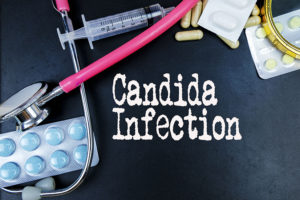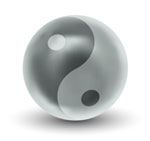 Candida is a classification of yeast and some turn into fungi. There are several species of Candida that can and do live in humans. Many yeasts help in digestion and absorption of nutrients in people; they are symbiotic with the healthy human body. However, if given the environment, can become antagonist in people, causing infection, a weakened immune system, and other very serious issues.
Candida is a classification of yeast and some turn into fungi. There are several species of Candida that can and do live in humans. Many yeasts help in digestion and absorption of nutrients in people; they are symbiotic with the healthy human body. However, if given the environment, can become antagonist in people, causing infection, a weakened immune system, and other very serious issues.
Candida albicans is the most popular yeast that can cause infection in humans. However due to the elevated use of broad- spectrum antibiotics, other forms of Candida are also becoming more popular as the culprit for infection such as Candida glabrata, Candida parasilosis, tropicalis, and krusei. What can make candida hard to get rid of is their formation of biofilms and their neurotoxic waste, which depletes one’s ability to fight against the yeast (weakening of the immune system) and causes serious side effects.
Biofilms are special layers of protein that higher- evolved organisms produce to protect themselves against things that will kill them; therefore, many antifungal and antibiotics are completely useless. A human’s own enzymes can help to invade these biofilms; but part of the weakening of the immune system mentioned before is that candida’s waste products inhibit the production of certain enzymes that can break through these biofilms… convenient right?! And to top it off, different species of candida produce different types of biofilms- they are specific to each species. To make it even scarier, scientists and researchers have found that different species of bacteria and fungi living together will make a joint biofilm that is different than their own individual one… (gasp)! That is why, when treating a candida overgrowth and infection, just changing one’s diet isn’t enough. It is a multi- step process that should be guided by an experienced practitioner that knows about the complicated systems and lives of these organisms.
How do you know if you do have a Candida overgrowth? Fatigue, white coating on tongue, craving for sweets, joint pain, bloating, diarrhea, brain fog, hormonal imbalance, chronic sinus and allergy issues, urinary tract infections, bacterial vaginosis, skin eruptions, weakened hair and nails, and a weakened immune system are all very likely in the instance of candida overgrowth.
What are some of the things that can make a great environment for candida to over-grow? Use of antibiotics, especially long- term use (even mild grade ones used for things like acne) and several rounds of antibiotics in a given time, birth control pills- an imbalance of hormones is like steroids for candida, those with diabetes- either type 1 or type 2, those using corticosteroids or those with a catheter, and those that are undergoing chemo or radiation for cancer. In these instances, the risk of developing candida overgrowth was increased.
Candida can develop where there is mucosal lining; the mouth, the vagina and the digestive tract (including the esophagus) are the most common. However, common skin infections are known from candida as well. And when things get bad, candida is found growing on the surface of organs. Some candida over growths are easily handled and some can become so serious that they are deadly, especially once the candida gets into the blood stream. This is a little rarer, but people with severely compromised immune systems, like those with AIDS, those in stage 4 terminal cancers, etc. are more likely to experience this type of candidiasis.
Some types of candida can be easily spread. For instance, oral thrush- even babies or toddlers sharing toys can pass it to each other. The same is true for vaginal yeast infections- passing back and forth between partners is very possible.
So what can you do to prevent and treat candida overgrowth?
Changing diet will be crucial to killing candida over growth. The most successful cases also include water fasting, broth fasting, and then transitioning into a diet meant to starve the candida and clean out the digestive tract. Those who skip the fasting take a little longer to see results. Again, fasting isn’t for everyone and therefore the help of an experienced practitioner will be best. Please note that the below diet paragraphs are strictly for an example. This is not for everyone; many cases are very specific in foods depending on the person and their unique case.
The first three days should be water only. Yes, water only. It can be hard to do, especially since blood sugar is usually imbalanced in the case of candida issues. Therefore, pick a time when you can be at home for three days or doing very minimal activity, especially day three. Drink plenty of clean filtered water, spring water, but not mineral or well water. Water will be flushing out all the toxins… and there will be a lot, even in the first three days.
The morning of day four will be difficult, but have warm water with lemon and ginger. After that, have a cup of ginger tea. This will be the start of your broth days which should be for two whole days. Use organic chicken or beef broth- it can be bone broth. Use garlic, onion, celery, parsley, ginger and turmeric for your broth. Day four is just the broth and the vegetables just listed. You can drink as much broth as you want those days. The second day of broth (day 5 in all of this) you would repeat with the water and lemon and ginger tea, and then the broth. This day you can add kale, broccoli, and cabbage to your broth to make a vegetable soup. Continue to drink plenty of water during these days.
Day 6- 21 should be cooked vegetables and little animal protein. Any vegetables except potatoes, sweet potatoes, squashes, carrots, and beets are fine. Zucchini, leafy green veggies, cucumbers, radishes, brussels sprouts, jicama, snow and sweet peas, asparagus, broccoli, cauliflower, cabbages, green beans, micro greens, sprouted greens are all fine now. Any animal protein except shellfish and eggs are also fine. All fruits should be avoided except: ½ c blueberries or raspberries or a small green apple a day and ½ of an avocado, is fine during this point. Continue sipping bone broth throughout the week.
After day 21, starchier vegetables can be added like butternut, acorn, delicata, and spaghetti squashes, carrots and beets. They need to be smaller servings, about ½ cup at a time, 2 servings a day. Also, adding some legumes is ok as well, only a couple times a week and ½ cup at a time. Expanding fruit choices to citrus, melons, and kiwi is fine as well. Adding in fermented foods and drinks at this time is necessary: kombucha, kimchi, sauerkraut, beet kavass, and yogurts or kefir are all acceptable. Duration of this choice of foods should be about 45-60 days. Assess where you are at this point to- whether to add other foods back in. It is strongly advised that following a Paleo type diet will help to contain candida in normal limits.
Herbal, homeopathic, and supplemental protocols are used alongside diet recommendations. Things like monolaurin, Pau D’Arco, cat’s claw, ginger, garlic, black walnut, wormwood, clove, cinnamon, oregano, rosemary, coptis, flax seed, chicory root, enzyme formulas (Wobenzym, Klaire Labs Interfase Plus), stevia, brush-border enzymes and pre- and probiotics, magnesium, bentonite clay, are all commonly used in different formulations and protocols to kill candida, their biofilms, and to restore your own gut health. Again, use a practitioner for timing, dosage, and use in your own unique case.
Acupuncture can be quite helpful during cleansing and managing your candida over growth. Keeping the digestive tract strong and moving is extremely important during all of this. The internal stress that is placed on your body is hard as well: detoxing, removal of candida waste product and dead cell waste which can cycle through your spleen and liver… with all this your body will be more tired and will need some extra care. Acupuncture will strengthen your digestive and immune system and help to start balancing those hormones that were out of whack due to the candida overgrowth.
If you have or suspect you may have candida overgrowth their is a simple at home kit – the Diagnostechs Expanded GI Panel – you can take and submit to their lab for testing. Once it is confirmed we can work with you (with acupuncture and dietary protocol) to help rid the overgrowth. Give us a call today to get started.
 Amy Carlson is a Holistic Nutritionist who practices a whole-foods based approach in helping the body to heal and thrive. She has a strong interest in sharing what she has learned so that everyone has the opportunity to live in a healthy body. “Each body has the ability to heal if it is given what it needs and the understanding of why it is hurting is discovered and nurtured as well.” Learn more about her approach to wellness by visiting her website.
Amy Carlson is a Holistic Nutritionist who practices a whole-foods based approach in helping the body to heal and thrive. She has a strong interest in sharing what she has learned so that everyone has the opportunity to live in a healthy body. “Each body has the ability to heal if it is given what it needs and the understanding of why it is hurting is discovered and nurtured as well.” Learn more about her approach to wellness by visiting her website.
